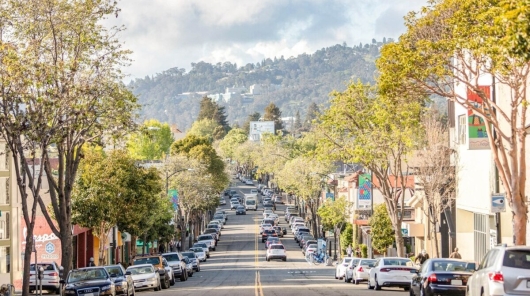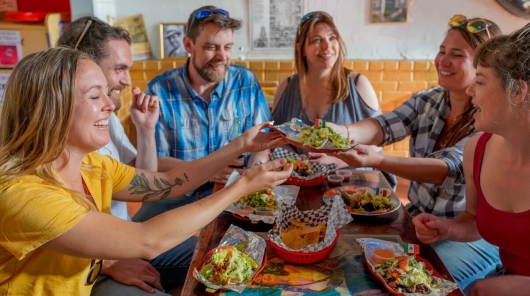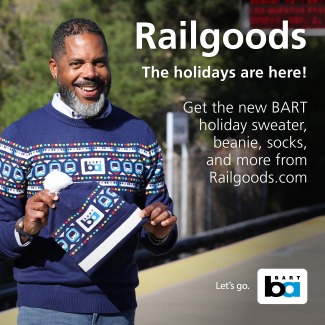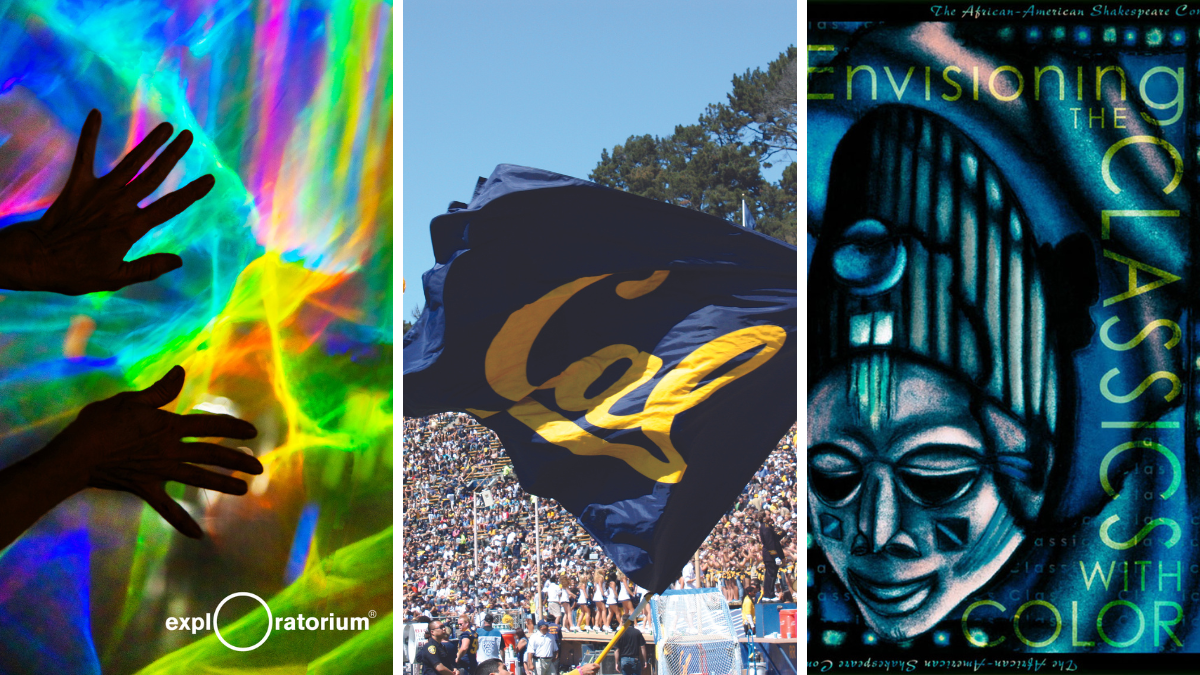
50 years of service: A look back at BART’s electric opening day
Last Updated On
A BART train being unveiled to an excited crowd.
In celebration of BART’s 50th Anniversary this year, we’re looking back at the transit system’s five decades of service and innovation in a new series of stories.
BART’s Opening Day by the Numbers
Fifteen years of planning. Eight years of construction. More than $1 billion. On September 11, 1972, BART finally opened for service.
|
# of stations open
|
12
|
|
Miles of track open
|
28
|
|
# of trains running
|
18 two- and three-car trains
|
|
Hours of service
|
Weekdays, 6am to 8pm
|
|
Cost of rides
|
$0.30 to $1.25
|
|
Cost to build system
|
$1.619 billion
|
The day was electric. Estimates suggest that more than 15,000 people showed up to test out the new, plushy-cushioned seats on the state-of-the-art trains. The attendance figures may sound low; when BART opened, only 18 two- and three-car trains ran the first day along the first 28-mile section of track, from MacArthur Station to Fremont. More than half the stations would open in the coming weeks, months, and years. The Transbay Tube – one of the technological jewels of the project – opened two years later, in 1974.
In his book, “BART: The Dramatic History of the Bay Area Rapid Transit System” (2016), former BART employee and historian Michael Healy describes the ribbon-cutting ceremony at Lake Merritt headquarters plaza: “The celebration was kicked off by a local high school band, and thousands of people gathered to hear speeches by numerous local dignitaries, including San Francisco mayor Joe Alioto and Oakland vice mayor Frank Ogawa, among others.”
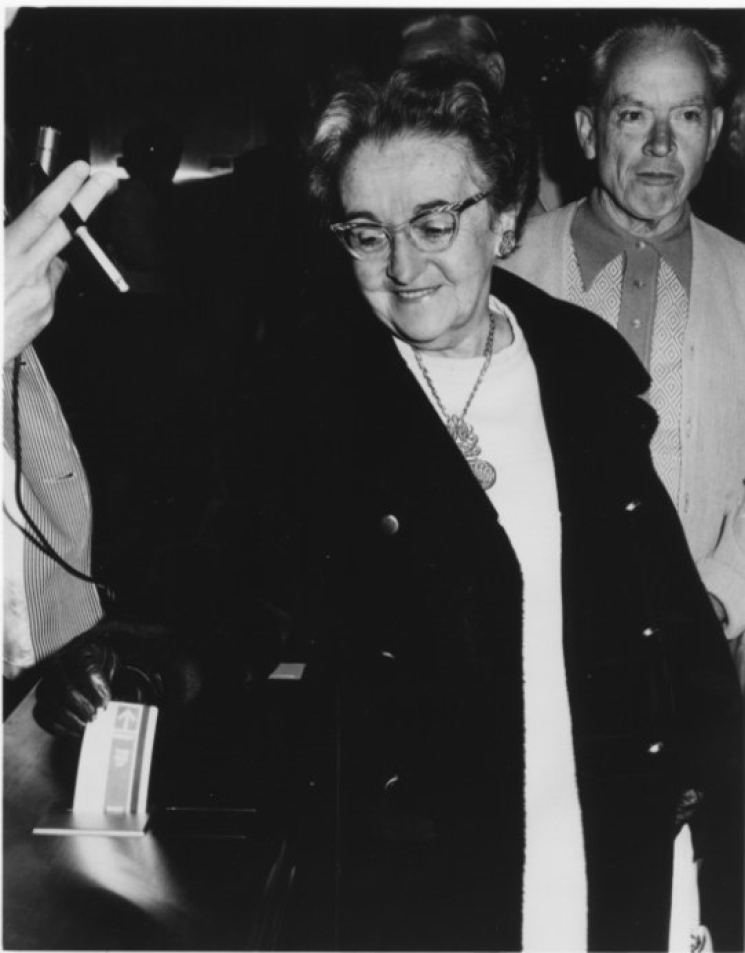
BART’s first paying passenger, Gertrude Guild, removes her ticket from the fare gate on Sept. 11, 1972.
At each station between Fremont and MacArthur stations, BART hosted a ribbon-cutting, with dignitaries from each city in attendance. Following each ceremony, the trains began moving northbound from Fremont and southbound from MacArthur amid shouts and cheers
Newspapers from the time reported packed, standing-room-only cars with upwards of 100 passengers. Within five days, more than 100,000 passengers ditched their cars and tried the trains.
“This is the end of the automobile for me,” Shirley Fisk is quoted as saying in the Long Beach Press-Telegram on opening day.

The original BART map from 1972.
“It’s just like Disneyland,” “sighed” Margie Benson, a BART employee, to the Los Angeles Times.
The San Francisco Examiner didn’t mince words when it proclaimed, “BART Passes Its First Rush Hour Test.”
The theme of the newspaper reports from the day: BART, the first new regional transit system built in the U.S. in 65 years, nailed its first trial.
There were some minor hiccups on opening day. Long lines developed at several stations. Two cars reported minor “breakdowns,” but were replaced with fresh cars within ten minutes, per the Examiner.
Of course, the critics came out with the cheerleaders. “Not everyone in the Bay Area is all-out in enthusiasm about BART,” U.S. News and World Report wrote, citing delays in construction, haggling over routes and design, and problems with the electric propulsion system.
But generally, the atmosphere on opening day was jubilant. “I intend to ride BART every day,” Huriah Minor, a former car commuter, told the Examiner.
Some folks were so enthusiastic that more than 100 stragglers were still found inside the stations as BART closed out its first day.
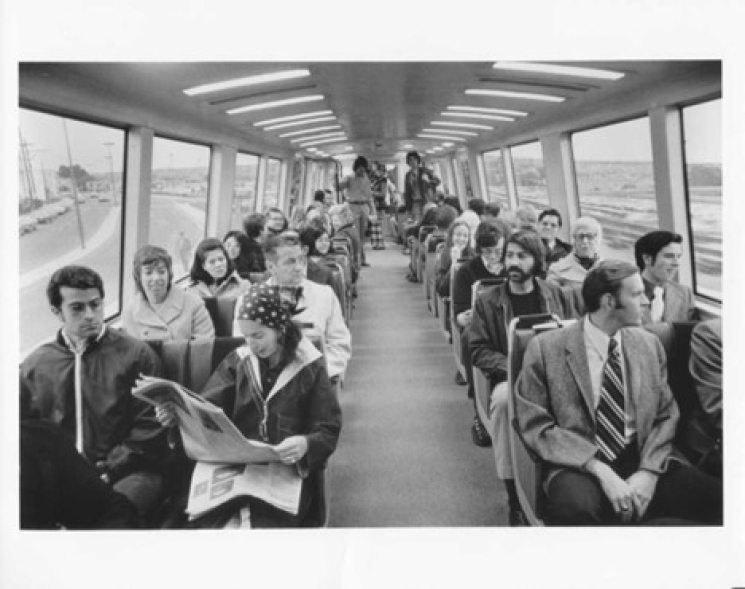
Early adopters of BART.
“At the end of the day, after ticket booths closed at 8 p.m., a special ‘sweep up’ train made a trip around the circuit to make certain nobody had been left at the 12 stations,” one newspaper wrote. “It proved a good idea. More than 100 passengers were picked up and deposited where they wanted to go.”
Healy was in the thrall of the crowds on that auspicious Monday morning. The Director of Public Affairs at the time of BART’s opening, Healy worked for the system for 32 years and retired in 2005. He said by phone recently, “September 11 was an incredible day.”
“We had journalists from all over the world – close to 7,000 of them – in attendance,” he said.

The first BART ticket.
Healy remembers putting together an impressive 10,000 press kits – all of which were gone by the end of the week. “It was exhausting,” he said.
Generally, Healy said, most Bay Area residents – and the world watching from the outside – were “thrilled by BART.”
“BART was finally here, this Space Age transit system,” he said. “Everyone was excited.”

Early BART employee uniforms.
Karen Basting, the Director of Customer Services at BART and a Bay Area native, remembers the jubilant atmosphere surrounding the system’s opening. Though she didn’t attend the opening event – it was a school day after all – she said she “did ride the early route for fun…soon thereafter.”
“It really did have a Disneyland feel,” she said.
Basting wasn’t the only one to arrive late to the party. On September 27, 1972 – just 16 days after the system opened – President Richard Nixon visited the Bay Area to “marvel at the future of transportation,” according to the Nixon Foundation.<link: https://www.nixonfoundation.org/2016/09/nixon-rides-bart/>
Nixon rode the train with his wife, Pat, BART General Manager B.R. Stokes, White House Press Secretary Ron Ziegler, and White House Chief of Staff Bob Haldeman, as well as Healy.

Richard and Pat Nixon ride BART with General Manager B.R. Stokes.
“We caravanned to San Leandro Station, and I showed Pat Nixon how to use the fare machines,” said Healy, who was appointed the official White House liaison for the visit. “She was very nice and very interested. Then everybody got on the train.”
There was one additional member of the party we’ve failed to mention: a U.S. Marine holding a peculiar briefcase. Years later, a mutual friend of the Marine and Healy’s would reveal that the briefcase was in fact “the football,” or the nuclear buttons.
“That was pretty crazy,” Healy said.
Nixon enjoyed the ride, saying the system “looks like NASA.” He later released a statement that commended BART for “setting an example for the nation.”
“The foresight, initiative, and constructive partnership demonstrated by the cities and counties which have joined in planning and building BART over the past two decades prove that workable new answers can be found for urban problems,” Nixon wrote.
But the celebrations didn’t end with the presidential visit. On January 29, 1973, just three months later, Oakland to Richmond service opened, extending service to 39 miles and 18 stations. The Concord line would open in May of that year, followed by the 7.5-mile San Francisco line. BART opened new stations – Milpitas and Berryessa/North San Jose – as recently as 2020.
When did you first ride BART?
We want to hear about the first time you rode BART! Tell us on social media, @SFBARTable #SFBARTable! Keep up with us on Facebook, Instagram and Twitter to see all of the best BARTable events, places to eat and have fun around the Bay.


